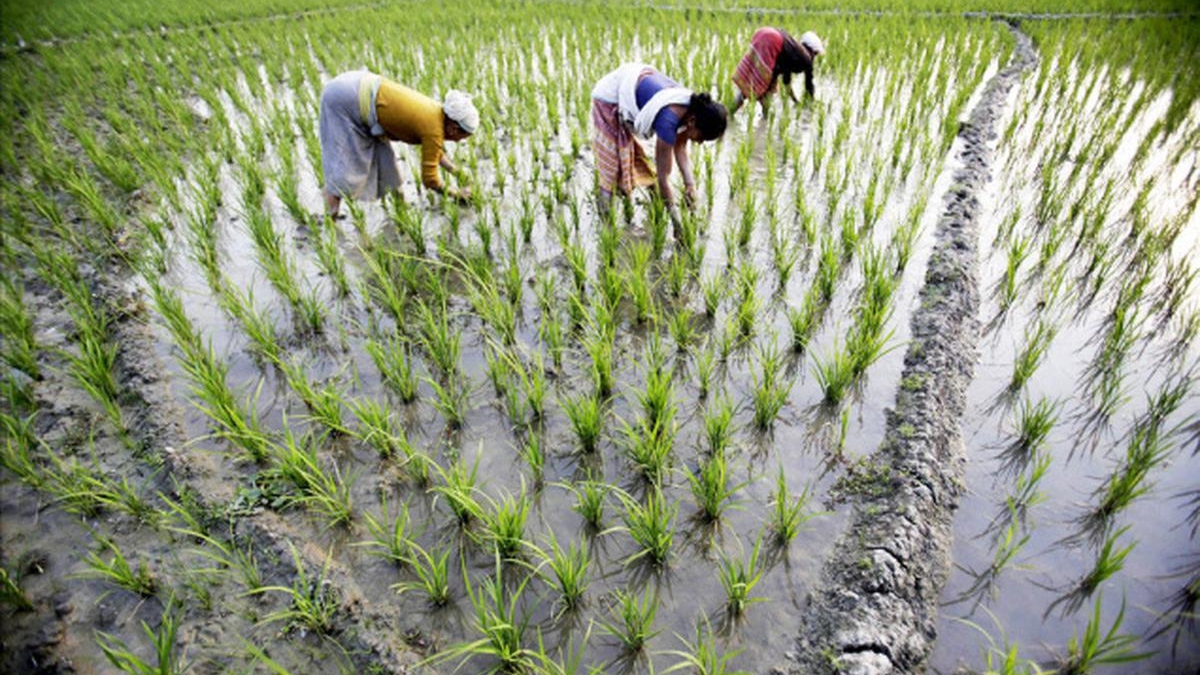










Green Revolution, India’s foodgrain output per acre has increased thrice since 1960s.
According to a data graphic released by centre on Tuesday, output of foodgrains per hectare increased from 757 kilogrammes in the middle of the 1960s to 2.39 tonnes in 2021. Centre advanced the case that “Green Revolution” increased agricultural productivity and made India self-sufficient in the production of food grains.
According to the fourth advance estimates of production of major agricultural crops released by the Union Ministry of Agriculture and Farmers Welfare on August 17, foodgrain production in India is projected to reach a record 315.72 million tonnes during the 2021–22 season, an increase of 4.98 million tonnes over what was harvested during the previous growing season.
The output is predicted to increase by 25 million tonnes from the average over the preceding five years (2016–17 to 2020–21) in 2021–22.
Record harvests are anticipated for a number of crops, including rice, maize, gramme, legumes, rapeseed, mustard, oilseeds, and sugarcane.
Minister Narendra Singh Tomar is of the opinion that the federal government’s farmer-friendly policies, along with the diligent labour of the farmers and scientists, are to blame for this record-breaking output of so many crops.
According to the most recent estimates, 130.29 million tonnes of rice, 106.84 million tonnes of wheat, 50.90 million tonnes of nutri/coarse cereals, 33.62 million tonnes of maize, 27.69 million tonnes of pulses, 4.34 million tonnes of tur, 13.75 million tonnes of gramme, 37.70 million tonnes of oilseeds, 10.11 million tonnes of groundnut, 12.99 million tonnes of soyabean, 11.75 million tonnes of rapeseed (each of 180 kg).
A record 130.29 million tonnes of rice are expected to be produced overall in 2021–2022 according to estimates. It exceeds the 116.44 million tonnes average production over the previous five years by 13.85 million tonnes.
Estimated wheat production for 2021–2022 is 106.84 million tonnes. The average wheat output over the previous five years was 103.88 million tonnes, therefore this year’s production is up 2.96 million tonnes.
An all-time high of 27.69 million tonnes of pulses are expected to be produced in 2021–2022, which is 3.87 million tonnes more than the average output of 23.82 million tonnes over the previous five years.
Earlier, many people were concerned that the lower amount of paddy that has been grown so far this kharif may result in a decrease in the yield of the foodgrain.
According to the most recent acreage statistics, the area now being grown for paddy is 343.7 lakh hectares, which is almost 8% less than the previous season.
This Kharif season, Indian farmers sowed less paddy. Most Kharif crops are seeded in the monsoon months of June and July, and the harvest occurs in October and November.
The delayed progress of the monsoon in June and its unequal distribution in July in much of the nation are the main causes of the decrease in the area seeded.
However, overall Kharif seeding has been comparatively better.
When compared to 2021, it is just slightly more than 2% lower at 1013 lakh hectares. According to the most recent statistics from the Minister of Agriculture and Farmers Welfare, there was 1038 lakh hectares of total sowing in 2021.










